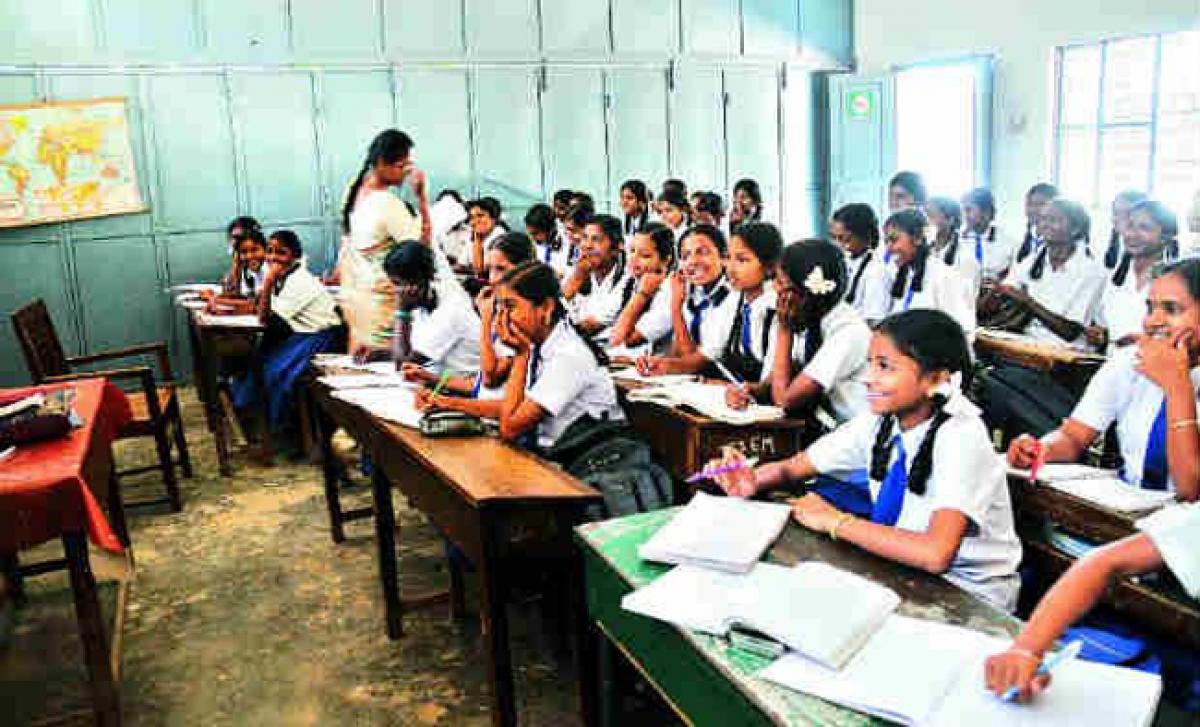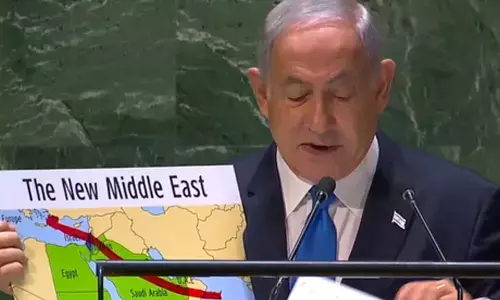School Education in Bangaru Telangana

For an effective and meaningful implementation of the fundamental right to education, elementary education was brought under Sarva Siksha Abhiyaan (SSA) to universalize elementary education.
For an effective and meaningful implementation of the fundamental right to education, elementary education was brought under “Sarva Siksha Abhiyaan” (SSA) to universalize elementary education. Similarly, secondary education has been brought under the flagship “Rashtriya Madhyamik Siksha Abhiyaan” Programme (RMSA). These two schemes are aimed at strengthening school education in terms of access, enrolment, retention, and quality.
Universal Access in School Education: The following norms have been laid down for establishing schooling facilities to achieve universal access to school education.
• Primary level schools should be within 1 Km distance of all habitations
• Elementary level schools should be within 3 Km walkable distance of all habitations
• Secondary level schools should be within a radius of 5 Km of all habitations
On these parameters, the State has achieved 99% access at the elementary level and 91.5% at the secondary level. Primary schools and Secondary schools have been started in areas which were not served earlier. There are 40,821 schools of various management are functioning in the State, details are given in Table below.
Table: Management-wise Schools, 2015-16
| Management | I-V Classes | I-VII/VIII Classes | I-XII Classes | VI-XII Classes | I-X Classes | VI-X Classes | Total Schools |
| Central Govt. | 3 | 3 | 13 | 11 | 11 | 6 | 47 |
| State Govt. | 2672 | 175 | 114 | 184 | 295 | 905 | 4345 |
| Mandal Parishad/ Zilla Parishad | 16950 | 3154 | 1 | 0 | 26 | 4087 | 24218 |
| Private Aided | 321 | 128 | 0 | 0 | 44 | 249 | 742 |
| Private Unaided | 1569 | 3528 | 0 | 0 | 4407 | 1265 | 10769 |
| Others | 433 | 200 | 27 | 2 | 27 | 11 | 700 |
| Total | 21948 | 7188 | 155 | 197 | 4810 | 6523 | 40821 |
Source: U-DISE data 2015-16
Enrolment: Steps are being taken for ensuring 100 percent access in education. Strengthening existing schools, opening new primary schools, the establishment of alternative schools and another type of educational facilities in smaller and unserved habitations are a few of the strategies implemented for universalization of elementary education.
Enrolment in all types of schools in the state during 2015-16 are 61.92 lakh, out of which 14.68 lakh in I –V classes; 9.63 lakh in I–VII-VIII classes, 1.12 lakh in I-XII classes and 0.89 lakh in VI-XII classes, 20.62 lakh in I-X classes and 14.98 lakh in VI-X classes.
Gross Enrollment Ratio (GER): With the initiatives taken by the Government, GER among classes I-V has increased to 114.51 during 2015-16 from 100.19 of the previous year 2014-15. As shown in figure 1, GER among classes VI-VIII is 83.89 during 2015-16 as against 86.93 in 2014-15. The GER among IX –X classes has increased to 80.20 from 76.42 of the preceding year.
Drop-Out Ratio: Drop out ratios among all the classes have reduced over a period of three years as shown in Figure 2. For classes I-V, the drop-out ratio has reduced to 16.33 percent during 2015-16 from the previous year of 19.25 percent. A decreasing trend has been observed in respect of Classes VI-VIII and IX and X. Drop out ratio is usually observed high among IX and X classes over other classes.
Teacher-Pupil Ratio: Sustained efforts are being made by the Government to recruit teachers in schools to maintain a reasonable teacher-pupil ratio. Rationalization of teachers, deployment of teachers and creation of new posts and massive recruitment of teachers helped in overcoming imbalances in the demand and supply of teachers. There are 2.2 lakh teachers in position in all types of schools during 2015-16 in the State. As per the data are shown in Figure 3, overall teacher-pupil ratio during 2015-16, is well within the norms (1:40), except I-X and I-XII School, where the teacher-pupil ratio is marginally above the norms.














